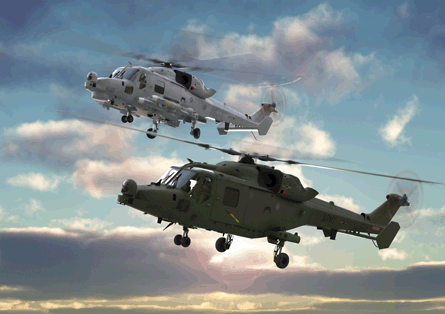The first of 12 British Army Lynx AH9 utility helicopters to undergo an engine replacement programme will fly for the first time in July, with modification work under way at AgustaWestland's Yeovil site in Somerset.
Ordered under an urgent operational requirement deal worth £70 million ($103 million), the so-called AH9A modification programme will rapidly deliver Lynx airframes capable of operating year-round in the harsh environmental conditions of Afghanistan.
Incorporating the LHTEC CTS800-4N engines from the UK's future Lynx Wildcat (formerly Future Lynx) multirole helicopter will increase the current model's lift capacity by 1t under hot and high conditions, says AgustaWestland.
 |
|---|
© British Army |
Four of the army's 22 AH9s are now on the company's modification line in Yeovil and are due for delivery by 31 October, with pilot training activities to start the previous month. "We're confident the aircraft will be finished on time," says David Hillcoat, AgustaWestland's head of Lynx. All 12 modified aircraft will be returned to army use by November 2010.
Capt Richard McElwaine, the Ministry of Defence's Lynx integrated project team leader, says discussions are taking place about modifying the remainder of the AH9 fleet to the same standard. The enhanced aircraft are planned to be retired progressively as the army's 34 new Wildcats enter frontline service, but could remain in use until 2022, if required.
 |
|---|
© AgustaWestland |
Source: Flight International
















